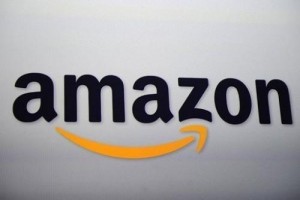As The Media Plan Is Whittled Down, Budget Will Flow To The Data-Driven Bidders
by Ciaran O'Kane on 21st Mar 2014 in News


There has been an unusual amount of jobs advertised of late for client-direct positions across the European market. It would seem the much anticipated budget squeeze is starting to happen at the trading desk level, and third party optimisers are struggling to get on plans.
The pitch to agencies now gets an all-too-common response, "why would give you budget, when our trading desk can do that!" Hard to argue with that really. Hence the stampede directly to the client's door. Ultimately this can only be short term approach - given the power of trading deals that span across multiple media channels.
Are brand advertisers really going to forfeit TV, Print and digital bulk buying discounts for the sake of a slither of display spend - which might be marginally optimised better by a third party player? Not likely. The landscape has utterly changed forever, and this new media buying reality is now dawning on the constituent players in the space.
Where there was many, there soon will be two
While the Trading Desks were finding their feet, much of the retargeting budget was handed to them with the prospecting farmed out to third party buyers. This is changing. Over the next six-to-twelve months, you will see most DR plans divert more budget to the Trading Desks for both retargeting and prospecting. Ultimately there will be only two on the plan - the ATD and a bench mark third party player to maintain competitiveness. The ATD will get the lion's share of the budget - as the holding groups push for more margin from media optimisation and execution.
What will be interesting about all this is the rise of a sub-plan where the data-driven bidders battle for budget.
The rise of the data-driven bidder - and access to preferred supply
While there are literally hundreds of bidders on the market, most are clones of each other with an algorithm built in. But what will set these "data-driven" bidders apart will be access to proprietary data and inventory. Let's take the example of AOL and Yahoo. Both have sizeable ad network businesses to protect. Yahoo alone runs a 200 million-plus ad network business. The rise of the ATD has ravaged the traditional ad network business.
The recent alignment of the Yahoo advertising business is clearly an attempt to capture this ATD budget. Yahoo is packing its bidder full of Yahoo data segments and only giving access to agencies via its own bidder. It's clearly a defensive move to protect this ad network revenue. There might be a managed service there too. But you can see a re-alignment in the ad network business for sure.
AOL too have a sizeable ad network to protect. Its pitch to agencies seems to be both a prop data one and preferred access to O&O inventory. Interesting that both these media companies are now locking down supply when the general approach over the past couple of years has been about open integration. Defensive positions are being taken.
A plan within a plan
The interesting thing around all this is that a new media plan seems to be emerging within the Trading Desks, made up of these new data-driven bidders. As we see a further splintering of the ad eco-system, it seems clear that these big media/e-commerce players are looking to access ATD spend. Who are the potentials on this new plan? Let's look at those likely to sit on the new ATD sub plan.
Amazon, the ecommerce bidder: Amazon is sitting on grade A first party data – and has built its own bidder. Likely to pick up focused DR/ CPA campaigns. Already grabbing budget. Its current bidder still has a few issues. But a new version is expected. But the Amazon segments makes this a serious money-grabber.
AOL: A defensive move clearly. AOL recognises its ad network will be cut out of a lot of spend. Offers access to preferred inventory and prop data. How much will agencies spend through the AOL bidder? Depends obviously on what inventory works for certain advertisers. The company has made clear its stack strategy with the launch of AOL Platforms.
Yahoo: Again Yahoo has a lot of network spend to protect. Offering Yahoo data and inventory exclusively through its own bidder seems like a shrewd move. How much will Yahoo be allocated? Again it will depend on what works best for specific advertisers. But has access to a lot of decent data.
DBM: The all powerful stack – plus it has the Google contextual engine. Once the fire walls come down between search and display expect Google to grab lots of budget. DBM is now the focus for the company.
Twitter: Does not have a bidder as of yet. Likely to have one by end of year to access demand. And expect its bidder to be preloaded with Twitter data segments.
Facebook: Again not in the data-driven bidder game – but will be soon. Talk of an ad network is nonsense – when it can help agencies leverage FB social via its own bidder. Expect Facebook to buy a DSP this year.
More first party giants to get in on data-driven media buying: Rakuten already white labels MediaMath, and expect more ecommerce and data players (Alibaba, Zalando, Experien) to enter the fray over the coming 12-24 months.
More ecommerce bidders to come... Rakuten already white labels MediaMath, and there are rumours of Tesco-owned Dunnhumby is acquiring Sociomantic for £200m. As the sub-plan opens up expect more companies laden with first party data to access Trading Desk budget.
Welcome to the sub-plan where those that have prop data and inventory at scale will win the growing ATD spend.








Follow ExchangeWire